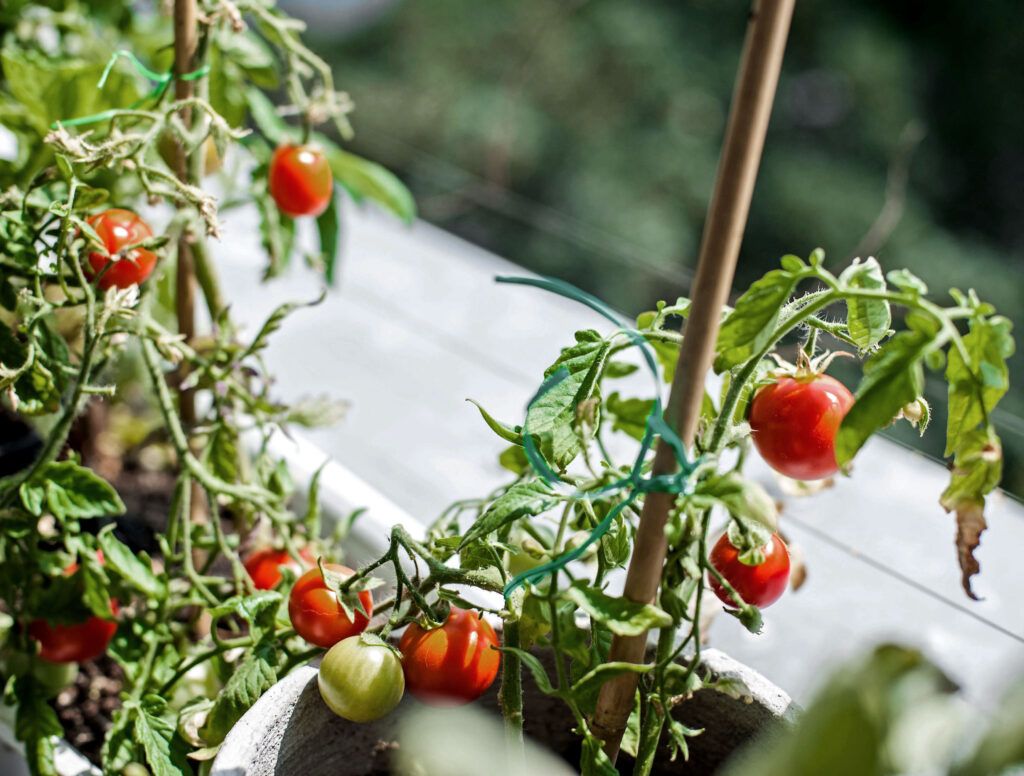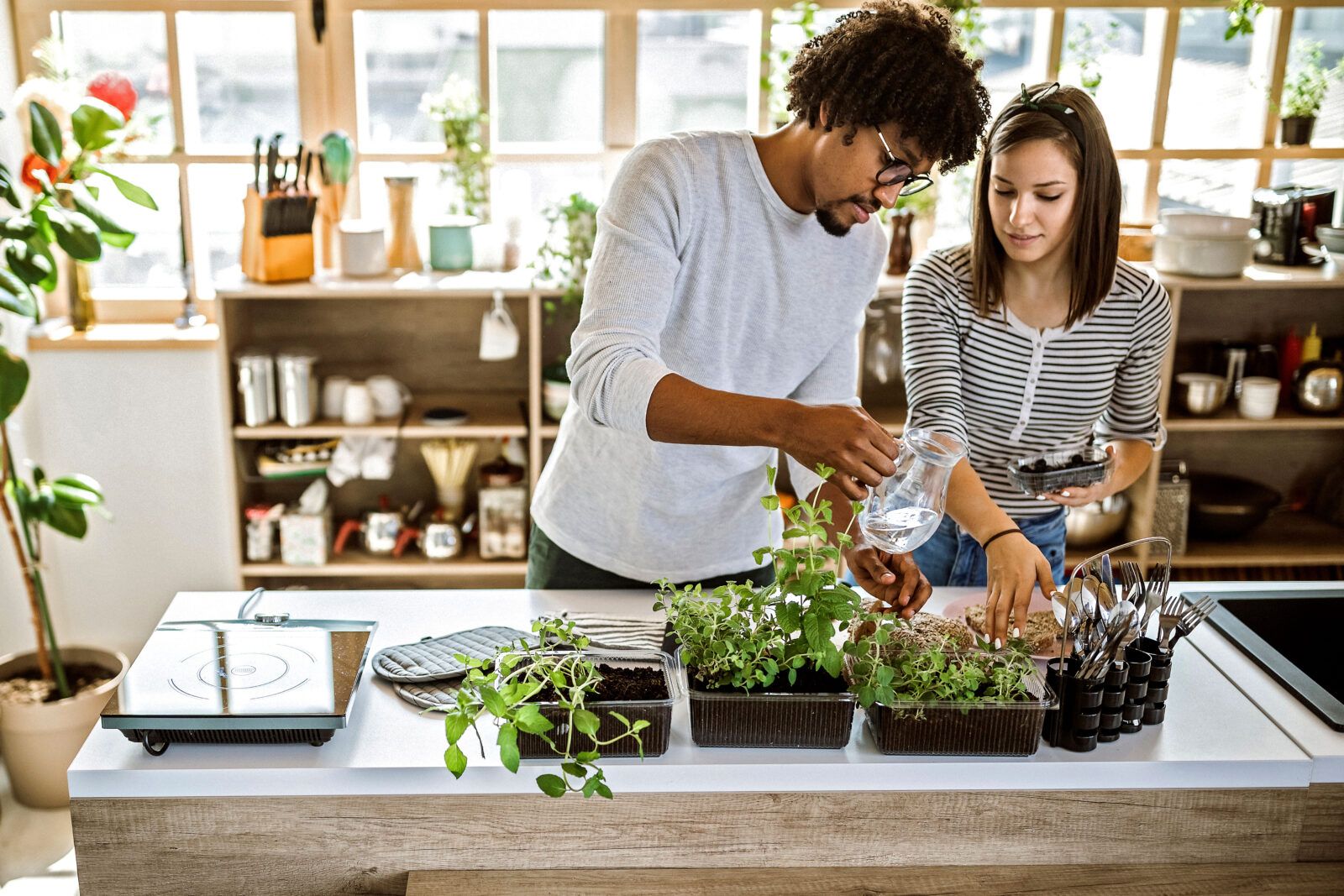There’s nothing quite like seeing that first sprout of green break through the dark soil of your own garden—like a cool science experiment that ends with snacks. But if you’re an apartment dweller, you don’t have to miss out on all the fun. It’s possible to cultivate a dizzying number of fruits and vegetables in an indoor garden year round.
Sign up for useful tips to green your life and protect our planet.
Here are some helpful tips and resources to get you started.
Ask the right questions
If you’ve never gardened indoors before, begin by assessing your space. How many hours of sunlight do you get? Is it humid or dry where you live? Do you have lots of room, or just a small corner? The answers will help you make the most of your apartment.
No matter where or what you plant, soil quality is crucial, so be sure to use organic potting mix and compost. And did you know you can even use the peels of Rainforest Alliance Certified bananas to fertilize your plants? Or if your fruits and vegetables attract pests, choose natural remedies such as neem oil. This garden is also your home, so be sure to keep it safe.
Small pots of herbs get big results
You don’t need a lot of real estate to grow herbs like basil, thyme, and mint—just some planters and a windowsill—but the benefits are sizable. Skip the last-minute supermarket runs for that one herb you’re missing from the recipe. Growing your own lets you harvest only what you need, saving money and reducing waste, organic and otherwise. Say goodbye to plastic containers and giant bunches of herbs that rarely get used up before they go bad.
Grow your own salad

Salad lovers can do one-stop “shopping” at home. Lettuce and microgreens are the ultimate low-maintenance veggies; they grow quickly, and don’t need as much sun as other plants. Carrots can even do better in an indoor garden, because it’s easier to control temperature and soil moisture. Radishes are a little like that teen who lives down the hall; they hate to be fussed over. Plant the seeds, keep the soil cool and moist, and let them do their thing from early spring until winter.
And don’t forget celery. While you can grow it from seed, you can also save the stump of the next bunch you buy and put it in water until new leaves emerge. Cover it with soil in a pot, but let that new growth poke out—like little green beacons of possibility.
An indoor garden brings the sunshine indoors
Even in the depths of winter, you can cultivate fruit in your apartment, as long as your plants catch enough rays. Strawberries need at least six hours of sun per day, but plant lights can fill the gap. (Look for energy-efficient grow lamps.) Thanks to their shallow root system, strawberries take well to different types of containers, and when space is tight, you can even grow them in hanging baskets.
If it’s the bright notes of citrus you seek, buy a small Meyer lemon tree, place it in your sunniest spot, mist it frequently, and spread its pollen around with a cotton swab. You’ll probably have to wait a while before you’re squeezing that first glass of homegrown lemonade, but when those fragrant golden orbs start appearing between the dark glossy leaves, your patience will be rewarded.
Get saucy with homegrown tomatoes and chiles

Even if you don’t live in the tropics, you can still produce your own salsa. Tomatoes and chiles require sun and warmth, so you will probably need grow lamps. Choose your varieties carefully and think small: tiny pequins will do better in an indoor garden than jalapeños or poblanos, while dwarf tomatoes beat the mighty beefsteak. If your pepper harvest is late to the party, supplement with store-bought Rainforest Alliance Certified chiles, and your mouth will be burning again in no time.
While growing an indoor garden isn’t likely to take the place of buying seasonal, local produce, it will connect you to what you eat. It will also deepen your appreciation for those who produce our food, especially the Rainforest Alliance Certified farmers who protect the planet and their communities by phasing out agrochemicals and applying more sustainable practices on their land.
